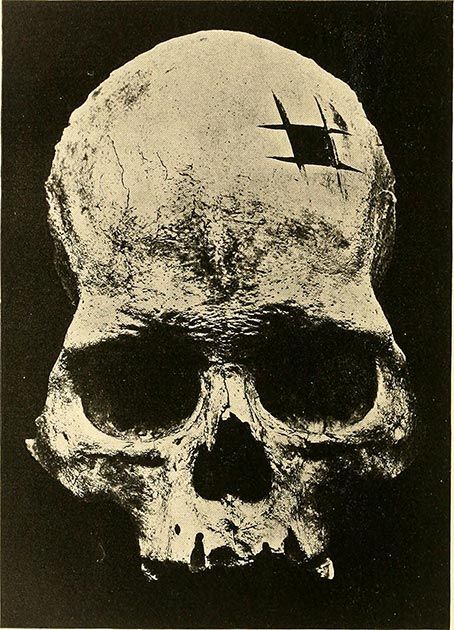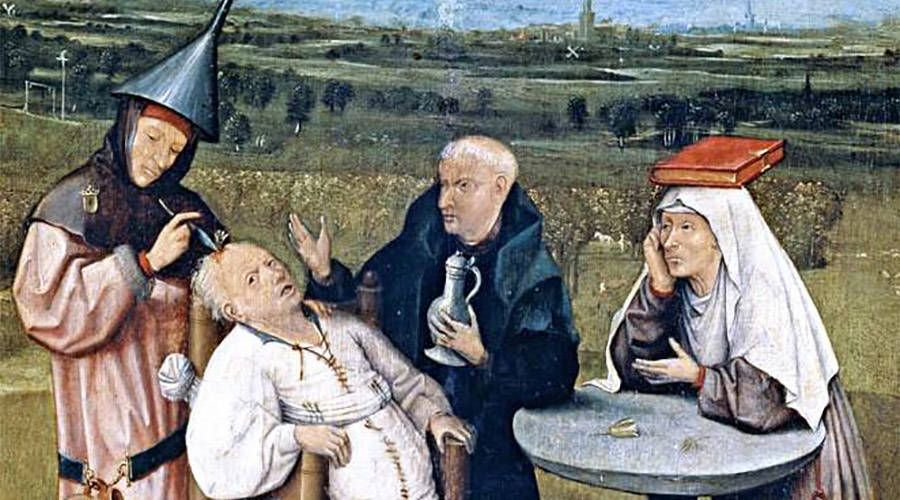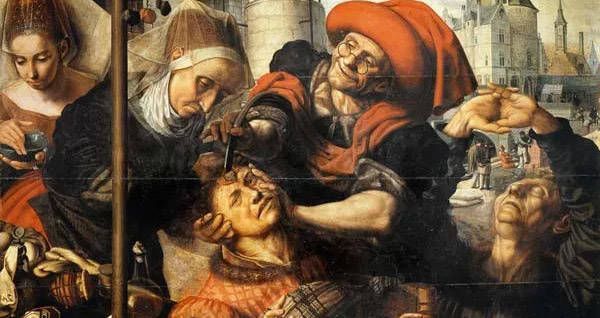Article
Pharmacy Fact: On Trepanning and Holey Heads for the Sake of Medicine
Author(s):
Key Takeaways
- Trepanning historically addressed skull fractures and pressure, avoiding direct brain contact, with evidence of patient survival in ancient times.
- Hippocrates recommended trepanning post-concussion, despite known adverse effects, maintaining its popularity through history.
Trepanning is one of the oldest known forms of surgery that was historically used to address issues pertaining to the skull.
Trepanning, also called trephining, is one of the oldest known forms of surgery. From the Greek word trypanon, which means to drill or bore, surgeons historically used flint, obsidian, metal, or shells to either scrape, cut a square, or drill a circlet of holes into their patient’s skull.

However, somewhat differently from what we understand to be brain surgery today, trepanning was not intended to touch the brain, its blood vessels, or the meninges, which are the membranes that enclose the brain and spinal cord.
Instead, trepanning was usually conducted to address issues pertaining to the skull. Based on the evidence from uncovered skulls at archeological sites, trepanning was found to usually have been conducted in ancient times following skull fractures, either to potentially remove broken fragments or alleviate pressure by removing clots. Some of these uncovered skulls also demonstrated signs of healing bone, which indicates that these patients survived their surgeries, and somewhat frequently at that.
However, things started to change in Classical Greece, when Hippocrates, often referred to as the Father of Medicine, began to recommend trepanning for patients following a concussion as a precautionary measure. The adverse effects of trepanning, which included headaches, melancholy, epilepsy, and additional head injuries, were not unnoticed by patients of the period. However, this did not hamper medical professionals’ enthusiasm for the procedure over the years.

Following the advent of firearms in the 14th century, there was a significant increase in the occurrence of traumatic head injuries during the Renaissance period that followed. With this increase in head injuries, there was also a significant rise in trepannings to treat these injuries as the years progressed.
By the 18th century, Europe was also notably dirtier than before, making trepanning a significantly more dangerous surgery than it already was, with an estimated 50% of patients dying during or shortly after the surgery was conducted.

Skulls uncovered at archeological sites had demonstrated a 20% mortality rate in comparison, showing that either the grime of Europe or the precision of its surgeons were causing patients’ survival prospects to become significantly less optimistic as time went on. In 1839, the prospect of being trephined had become so perilous that the surgeon Sir Astley Cooper wrote, “If you were to trephine, you ought to be trephined in turn.”
Though trepanning is still used today to treat certain cases of traumatic brain injury, some have looked to this surgery for other potential benefits as well. In 1965, a Dutch librarian named Bart Hughes looked to trepanning as a method of bringing about a higher state of consciousness, although his awareness of this possibility and his search for this higher state did notably occur after he failed out of medical school.
Despite this drawback in obtaining medical credentials, Hughes remained determined in his efforts to improve his mind. Using an electric drill, knife, and a hypodermic needle, Hughes went to work in his bathroom mirror drilling a hole in his own skull at a front-facing point above his eyes. After finishing the surgery, he explained, “I feel as I felt before the age of fourteen.”
He wrote of these observed benefits at length in his book Trepanation: The Cure for Psychosis. After reading Hughes’ book, some readers were inspired to follow suit on their own skulls to experience this new enlightened adolescence themselves. Thankfully, these individuals remain in the minority, as the guiding phrase “I need that like I need a hole in the head” may have been beneficial as a deterrant.
REFERENCE
Kang L, Pedersen N. Quackery: A Brief History of the Worst Ways to Cure Everything. New York, NY: Workman Publishing; 2017.

FDA Approves Dupilumab, Marking First Targeted Therapy in a Decade for Chronic Spontaneous Urticaria





